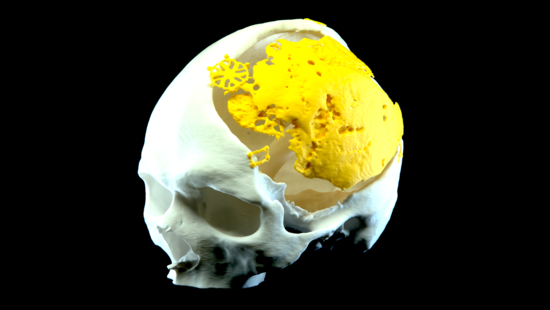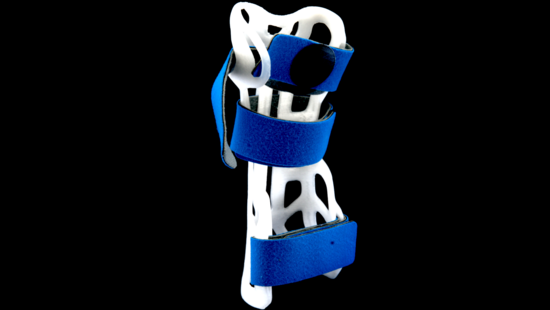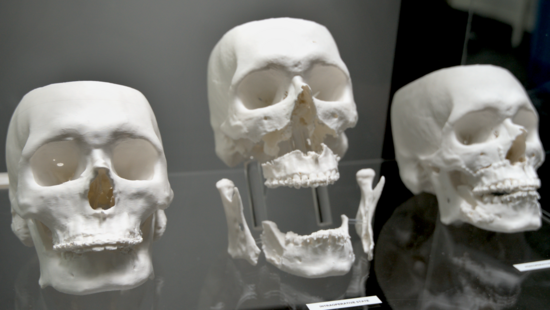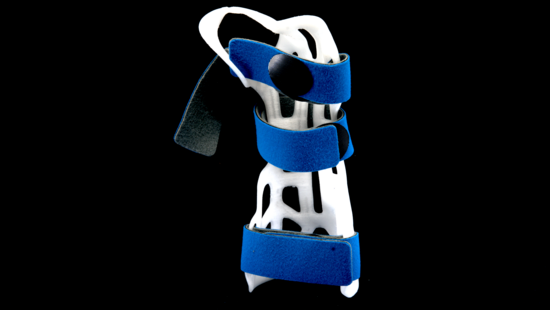
PLA Material Details
General Information
PLA, or Polylactic Acid, is one of the most commonly used materials in FDM (Fused Deposition Modeling) 3D printing.
It was specifically developed for this technology, ensuring clean and warp-free printing.
PLA finds widespread use, primarily for rapidly and cost-effectively creating prototypes. Its low shrinkage makes PLA particularly suitable for large-scale parts.
Biodegradable
PLA is derived from cornstarch or grains and is biodegradable under industrial composting conditions.
Despite its compostability, PLA is very durable and can be used for long-lasting applications. Additionally, it is resistant to most chemicals.
Temperature Sensitivity
PLA is known for its hardness but is also brittle. It's sensitive to high temperatures, as it tends to lose its strength.
When exposed to direct sunlight, especially in a vehicle, PLA can soften and start to deform. Ideal for Segmented Bone and Skull Models Due to its matte surface finish, PLA is particularly well-suited for creating segmented bone and skull models, offering excellent detail and realism.
It can accurately reproduce anatomical features, making it valuable in medical and educational applications.
Mechanical Use
While PLA is not as mechanically robust as some other materials, it can still be used for mechanical applications with moderate loads. It is essential to consider its temperature sensitivity and brittleness when selecting PLA for mechanical parts. For applications where high mechanical stresses are not a concern, PLA can provide a cost-effective and accessible solution."
Printing in PLA
Minimum Wall: 1 mm
Smalest Detail : 0.3
Layer hight : 0.2 mm
Max Print size: 256 x 256 x 256 mm
Tollerance: ± 0,2 mm
Delivery Times: typicaly 2-3 Businessdays

Pro`s and Con`s
Pro:
- Hard and Stiff: PLA is known for its hardness and rigidity, making it suitable for various applications.
- Biodegradable: PLA is derived from renewable sources and is biodegradable under industrial composting conditions.
- Minimal Warping: PLA exhibits minimal warping during the 3D printing process, resulting in accurate prints.
- Strong Chemical Resistance: It is highly resistant to most chemicals, ensuring durability.
- Cost-Effective: PLA is an affordable 3D printing material, making it accessible to a wide range of users.
- UV Resistant: PLA has good UV resistance, making it suitable for outdoor applications
- High Tensile Strength: It offers high tensile strength, making it suitable for load- bearing applications.
- Fire-Resistant: PLA is relatively difficult to ignite, contributing to its safety features.
- Biocompatible: PLA is biocompatible, making it suitable for medical and certain industrial applications.
Con
- Low Resolution Due to FDM Process: PLA may have lower resolution compared to some other 3D printing materials when using the Fused Deposition Modeling (FDM) process.
- Temperature Sensitivity (Softens at 60°C): PLA becomes soft and loses its strength when exposed to temperatures around 60°C, which can limit its use in high- temperature applications.
- Brittle: It can be brittle, which may affect its performance in certain applications.
- Not Weatherproof: PLA is not highly weather-resistant and may degrade when exposed to outdoor environmental conditions.
- Not Suitable for Food Contact: PLA is not recommended for direct contact with food items due to potential moisture absorption and degradation concerns.
Applications of PLA 3D Print




Examples of Applications:
- Point-of-Care 3D Printing: PLA can be used in point-of-care medicine to create customized medical devices and aids that meet the individual needs of patients.
- Surgical Planning: In the field of surgery, PLA 3D printing enables the creation of precise anatomical models that can be used for surgical planning and simulation.
- Housings for Medical Devices: PLA can be employed to manufacture casings and enclosures for medical devices and instruments, making them easier and more cost-effective to customize.
- Prototyping in Mechanical Engineering: PLA is ideal for the rapid and cost-effective production of prototypes for mechanical components and mechanical engineering applications.
- Demonstration Models and Rapid Prototyping: PLA is commonly used for creating detailed demonstration models and for rapid prototyping, making it an invaluable tool for students and researchers working on various projects.
The versatility of PLA in 3D printing enables a wide range of applications in research and medicine, from individual patient care to medical device engineering, surgical planning, and rapid prototyping for student research projects.
Technical specifications
General Properties
| Property | Test Method | Value | |
| Density | ISO 1183, GB/T 1033 | 1.17 g/cm3 at 23°C | |
| Melting Point | 10°C, 2.16kg | 7-11 g/10min | |
| Light Transmission | N/A | N/A | |
| Flame Resistance | N/A | N/A | |
| Moisture Absorption | 0% RH – 23°C | 0.51 % |
Mechanical Properties
| Property | Test Method | Value |
| Elastic Modulus (X-Y) | ISO 527, GB/T 1040 | 2636 ± 330 MPa |
| Elastic Modulus (Z) | ISO 527, GB/T 1040 | N/A |
| Tensile Strength (X-Y) | ISO 527, GB/T 1040 | 46.6 ± 0.9 MPa |
| Tensile Strength (Z) | ISO 527, GB/T 1040 | 43.5 ± 3.1 MPa |
| Elongation at Break (X-Y) | ISO 527, GB/T 1040 | 1.90 ± 0.21 % |
| Elongation at Break (Z) | ISO 527, GB/T 1040 | N/A |
| Flexural Modulus (X-Y) | ISO 178, GB/T 9341 | 3283 ± 132 MPa |
| Flexural Modulus (Z) | ISO 178, GB/T 9341 | N/A |
| Flexural Strength (X-Y) | ISO 178, GB/T 9341 | 85.1 ± 2.9 MPa |
| Impact Resistance (Charpy X-Y) | ISO 179, GB/T 1043 | 2.68 ± 0.16 kJ/m2 |
Thermal Properties
| Property | Test Method | Value |
| Glass Transition Temperature | DSC, 10°C/min | 61°C |
| Melting Temperature | DSC, 10°C/min | 150°C |
| Crystallization Temperature | DSC, 10°C/min | 113.5°C |
| Decomposition Temperature | TGA, 20°C/min | N/A |
| Vicat Softening Temperature | ISO 306, GB/T 1633 | 62.90°C |
| Heat Deflection Temperature | ISO 75 1.8MPa | 58.1°C |
| Heat Deflection Temperature | ISO 75 0.45MPa | 59.8°C |
| Thermal Conductivity | N/A | N/A |
| Thermal Shrinkage | N/A | N/A |




